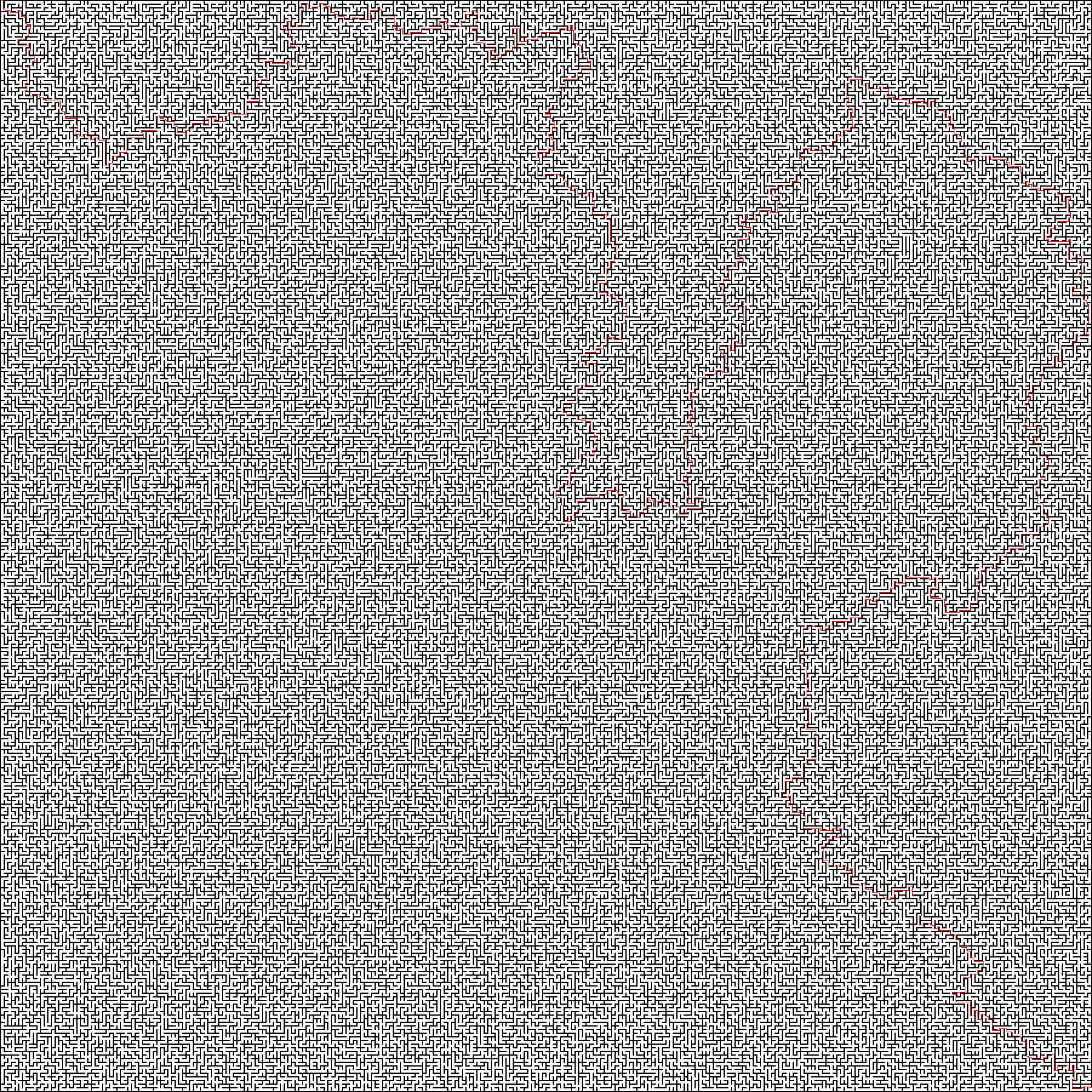This is a very simple C++ implementation of the A* algorithm for pathfinding
on a two-dimensional grid. The compiled astar.so file is callable from Python. See pyastar.py for the Python wrapper and
examples.py for example usage. Uses 4-connectivity by default, set allow_diagonal=True for 8-connectivity.
I recently needed an implementation of the A* algorithm in Python. Normally I would simply use networkx, but for graphs with millions of nodes the overhead incurred to construct the graph can be expensive. Considering that my use case was so simple, I decided to implement it myself.
Run make to build the shared object file astar.so.
import numpy as np
import pyastar
# The minimum cost must be 1 for the heuristic to be valid.
weights = np.array([[1, 3, 3, 3, 3],
[2, 1, 3, 3, 3],
[2, 2, 1, 3, 3],
[2, 2, 2, 1, 3],
[2, 2, 2, 2, 1]], dtype=np.float32)
# The start and goal coordinates are in matrix coordinates (i, j).
path = pyastar.astar_path(weights, (0, 0), (4, 4), allow_diagonal=True)
print(path)
# The path is returned as a numpy array of (i, j) coordinates.
array([[0, 0],
[1, 1],
[2, 2],
[3, 3],
[4, 4]])To test the implementation, I grabbed two nasty mazes from Wikipedia. They are
included in the mazes directory, but are originally from here:
Small and
Large.
I load the .png files as grayscale images, and set the white pixels to 1
(open space) and the black pixels to INF (walls).
To run the examples:
- Run
maketo build the shared object fileastar.so. - Set the
MAZE_FPATHandOUTP_FPATHas desired inexamples.py. - Run
python examples.py.
Output for the small maze:
time python examples.py
loaded maze of shape (1802, 1802)
found path of length 10032 in 0.258270s
plotting path to solns/maze_small_soln.png
done
real 0m2.319s
user 0m0.403s
sys 0m1.691s
The solution is visualized below:

Output for the large maze:
time python examples.py
loaded maze of shape (4002, 4002)
found path of length 783737 in 3.886067s
plotting path to solns/maze_large_soln.png
done
real 0m6.495s
user 0m4.007s
sys 0m2.273s
The solution is visualized below:

To run the tests, simply run py.test in the tests directory.
cd tests
py.test
The tests are fairly basic but cover some of the more common pitfalls. Pull requests for more extensive tests are welcome.